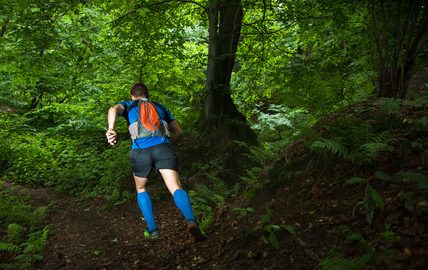A few months ago I wrote a blog post about the relationship between imaging results and actual symptoms in people with chronic knee pain.
In general, we argue that exercise therapy is at least as effective as surgery for most people with wonky knees, but with a lower risk.
Of course, if it was as simple as just exercising nobody would have knee pain and I wouldn’t have a job.
One thing I struggle with as a Physiotherapist is helping people stick to an exercise plan. Everyone knows exercise is good (or that sitting on your couch playing video games all weekend is bad…not naming names) yet many of us have difficulty adhering to a program. If you’ve ever been to a gym in the first week of January and compared it to the middle of February, you know what I’m talking about.
When making any new behavior change, we can run into barriers.
Barriers can include family commitments, work, financial limitations and any number of other things; we counter these with facilitators, or things which help us reach our goals. These can include family support or highly valuing the change we are embarking on. In general, the more we value a change, the less likely we are to let the barriers knock us off course.
Why the long winded babble?
Well, while perusing Physio Twitter (like normal twitter but more polite) a couple weeks ago I found a new study making the rounds. Researchers performed a systematic review and meta-analysis on studies which used exercise as a treatment intervention for knee osteoarthritis.1 Ultimately, their goal was to determine if increasing muscle strength or simply the act of performing exercises was the driver for reduced pain in people with arthritis. Their study looked at 53 different programs and 4700 participants of varying sexes, sizes, ages, and degrees of disability. On average, programs involved exercise 2-3x per week and lower body strengthening ranged from 2-3 sets for 8-12 reps.
What did they find? That strength gains of at least 30% were needed to see an improvement in pain.
30%!
If you read my blog about strength training a while ago, you might remember that it takes between 8-12 weeks to see any gain in strength with exercise. It should be noted in that study, 12 weeks did not lead to a 30% increase in strength – not even close.
Why do I bring this up? Lack of early results is a significant barrier to exercise adherence. It makes sense – when doing any kind of work, you want the fruits of your labour to be obvious (at home I always chose to sweep the floors for this reason). Exercise simply doesn’t work that way. It takes time, it takes commitment, and it takes a lot of work to get anywhere.
So. For those of you battling knee arthritis or any other joint problem – keep it up. Do a set right now. 30% is at the end of the tunnel, you just need to keep moving.
Tim Childs
- Bartholdy, C. et al. The role of muscle strengthening in exercise therapy for knee osteoarthritis: a systematic review and meta-regression analysis of randomized trials. Seminars in Arthritis and Rheumatism. 2017.



